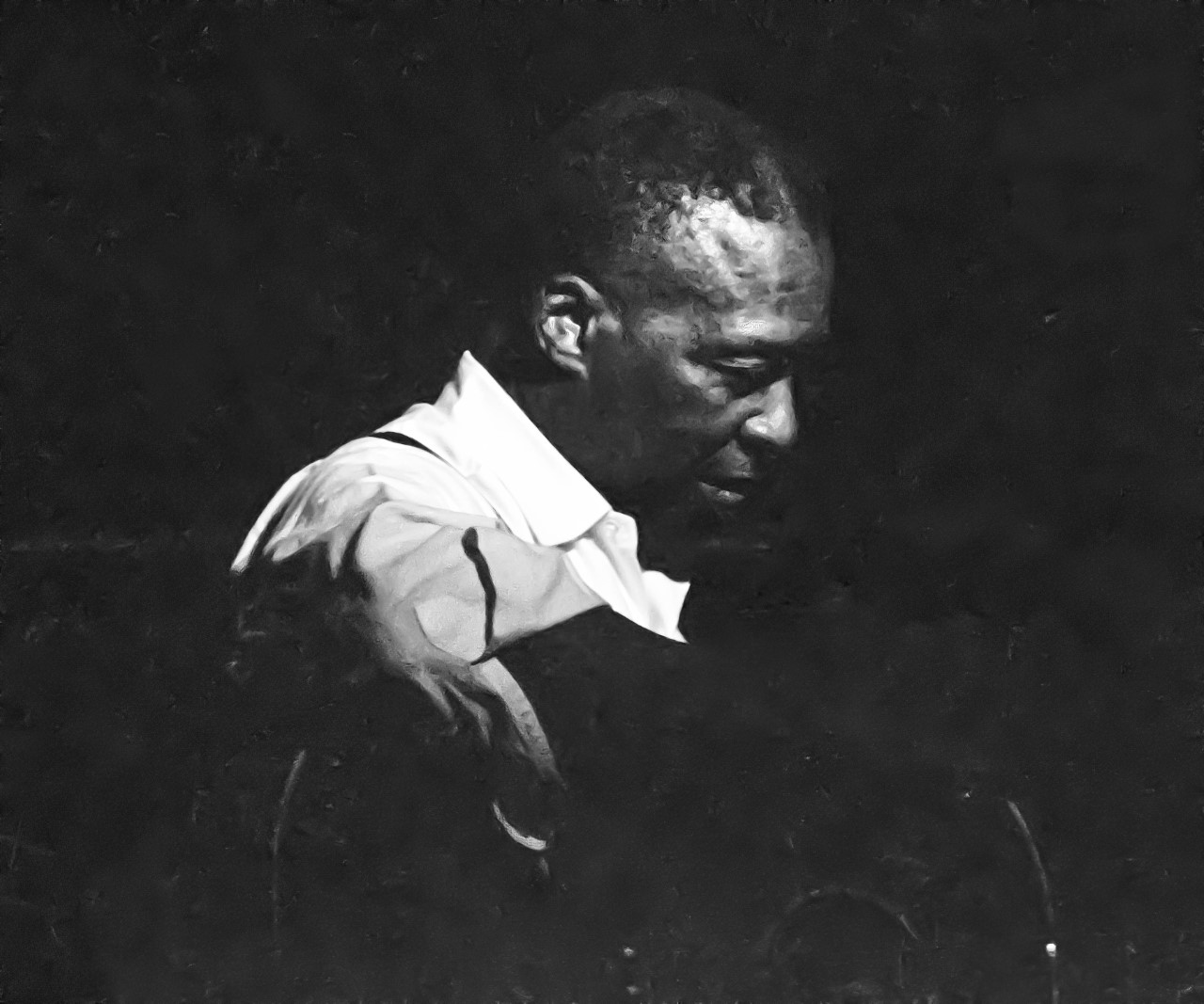The first time that my wife, Monica, and I stepped foot into Paisley Park, it was through an invitation from Julian White aka DJ Brother Jules who was Prince’s house DJ, first at Prince’s club Glam Slam and then for many years at all those renowned late night/early morning parties and performances at Paisley Park.
Toni Cade Bambara’s Memoir: An Excerpt from “Working At It in Five Parts”
Toni Cade Bambara’s “Working At It in Five Parts” is a hidden gem of prismatic self-reflection that we were surprised to find collecting dust in the Spelman College Archives along her voluminous letters, story drafts, teaching lesson plans, and much more.
The Last Irving
The café had four octogenarian Irvings. Two have passed; one is infirm. The fourth, now 92, sat on a bench outside the Cheese Board. We spoke of every day being a blessing, of every hour.
“Succession’s” Essence
There is no unhappiness quite like that of a Legacy Media Family. Such is the premise of HBO’s Succession. At the heart of the show is Logan Roy (a very leonine Brian Cox) and his four children, the most viable candidates to take over leadership of the publicly-owned but family-run company called Waystar Royco, a conglomerate of business ranging from cruise lines to motion picture production to cable news. The Roys are miserable, especially when they are all together, and they are always together—insulting, undermining, and threatening each other with little reserve or discretion. They find the savage fun in dysfunctional, and many of us could not wait for the show to return after a long Covid-19 hiatus.
The Starry Sky Above and the Moral Law Within

Dear friends and family,
Recently I happened to come across the question as to whether it is possible to care too much.
Hanging out with Horses (in the 80s)
THERE WERE A HALF-DOZEN wonderful family shots in our batch of holiday Polaroids — but so far I’ve had eyes for only one picture in the pile. It shows Tom, our older boy, and my wife holding a horse, with James, our grandson, in the saddle, steadied by myself, Granddad. A New Yorker, 3 years old, James hasn’t been on a horse before. He’s looking at the camera, not at us, or at Terence — Terence is the horse — but what is his expression? I keep coming back to the shot, trying to read James’s face. Is he enjoying himself? Is he the kind of kid who, a bit older, will think it’s cool — or whatever they will say then — to spend a horsy summer in the Berkshire hills?
“My Heart is in My Ears”: Listening to Jekalyn Carr (et al.)
“Get in your right posture!” Per Ms. Carr as she wails and falls down for her savior. God knows we should all take a knee for her — and her Sister Charisse. (I hear that Youtube commenter: “Why ain’t nobody talking about how ms charisse killed it. lord her voice is heavenly.” No doubt! She made Jekalyn JUMP!)
Jekalyn Carr and Ashley Charisse Mackey are major but they’re not too far gone from the small storefront church in Roxane Beth Johnson’s verse…
Reverse Ghazal
(for B.)
Secrets that lips hold back, the body shows.
Be gone, Sun. In moonlight, the body glows.
Rittenhouse sobs he shot in self-defense.
Entry wound in the back, the body knows
Poetic Payback
Martín Espada’s Floaters has won a National Book Award. What follows are poems from the book — along with an intro and a few echoes — originally posted here last spring.
National Ghazal
Teacher back home, maid in America.
He sold tusks and jade in America.
The Past Is A Grotesque Animal
Excerpt from the unpublished novel Dzhokhar Tsarnaev I Love You.
After a few years of silence, R began to receive death threats again from Kaveesha, the Berkeley ultraleftist child of Tamil Tigers. He sent her memes of Mayo jars to remind her she was white. This is just sad, R said. If he were getting to some real deep cruel shit, I would be into it. (She was an extreme emotional masochist).
********************
Then he started sending her love poems by Faiz Ahmad Faiz. He didn’t stop sending her death threats. She asked me to write a response to his ludicrous, dangerous, manic emails. I told her my days of ghostwriting for her were over. (No more eulogies, elegies, birthday wishes, love letters, etc. You’ll have to write your own suicide note, I told her. We all have to write our own suicide notes, at the end of the day.)
Things Seldom Turn Out for the Best: Three Rounds With Edward Gorey
man in feathered fedora, mirrored shades
shopping cart of empty bottles and dreams.
pieces of morning punctuate each look’s
recognition/incorporation/ingestion
chemicals for better living.
great grey beard, great grey coat dripping,
to mid-calf, above which, incidentally, cut-off shorts.
They had arrived early for the reading.
“This review is driving me crazy,” Goshkin said, pen poised above manuscript draft.
“Oh,” Ruth looked up from her Kate Atkinson.
They sat at their favorite table, she facing the espresso machine and Goshkin a floor-to-ceiling window. Sometimes passing people seemed poems and sometimes performers entering and exiting within an existing-for-an-instant play. He would have meditated, but when a piece was percolating, his mind reformed sentences and weighed ideas.
The “Forever War”
President Biden’s decision to withdraw from Afghanistan has provoked a flood of commentaries on our “forever war.” This obviously isn’t the war in Afghanistan, which lasted a long time but not forever. Indeed, Fred Smoler has made a strong case that Biden ended it too soon, given the consequences of defeat for Afghan women. I would be inclined to agree; my political sympathies lie that way. But I suspect that the war failed disastrously long ago, and Trump’s agreement with the Taliban, a virtual surrender, effectively ended it.
Did Afghanistan Have a Chance?
In the main I agree with Michael Walzer—this is almost invariably the case—but since broad agreement is rarely the stuff of mesmerizing political discussion I’ll declare a few reservations.
Do the Wrong Thing
As though, for the first time I saw my country
And, with a pang of recognition, knew
It is all mine and nothing can divide us
It is my soul, it is my body, too
Iris Dement, “From An Airplane”
Everyone’s lost their damn minds. Americans stalk their local chain stores or Arby’s—once thought neutral ground—with an insatiable need to talk politics. Usually in the most asinine and conspiratorial ways.
